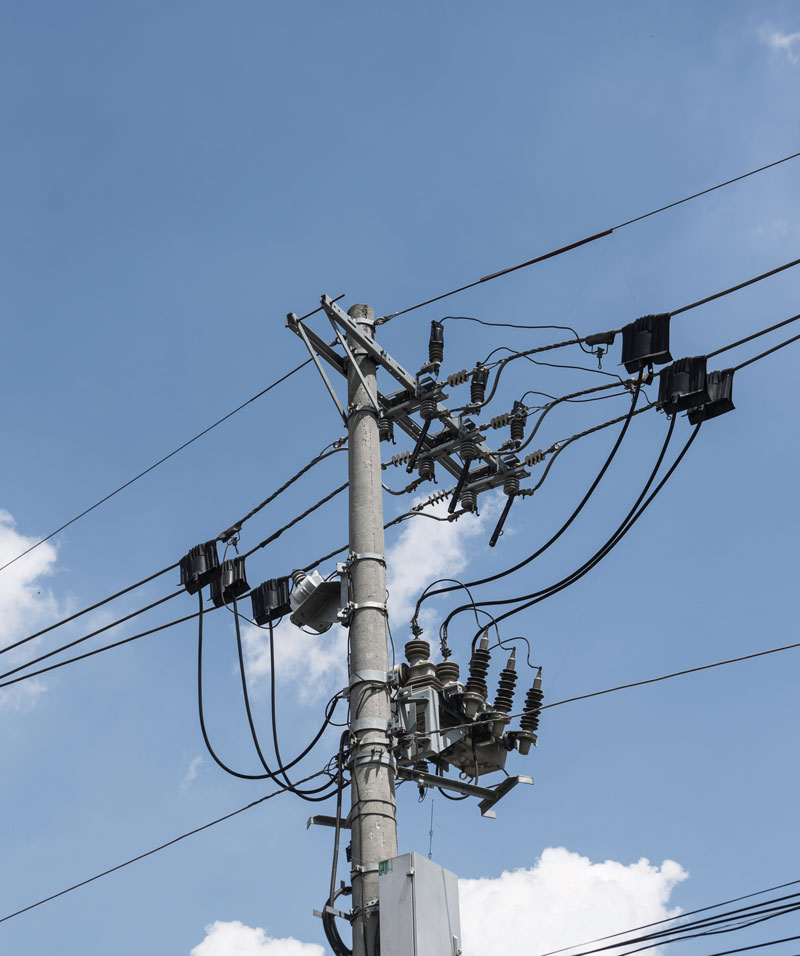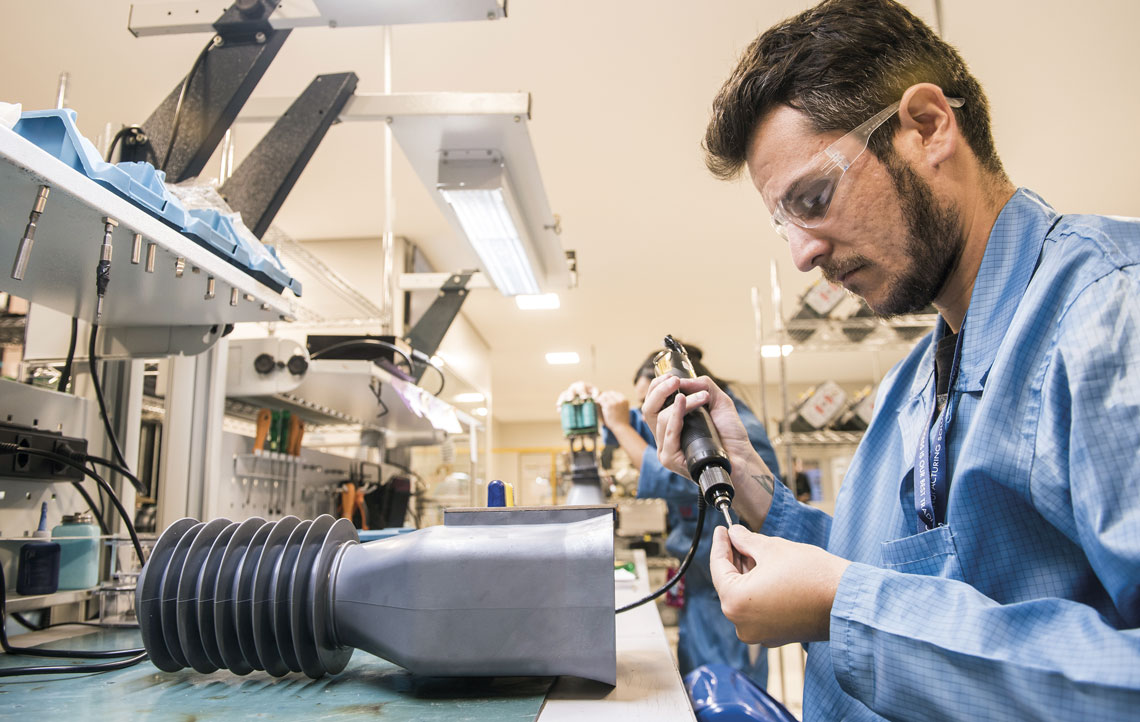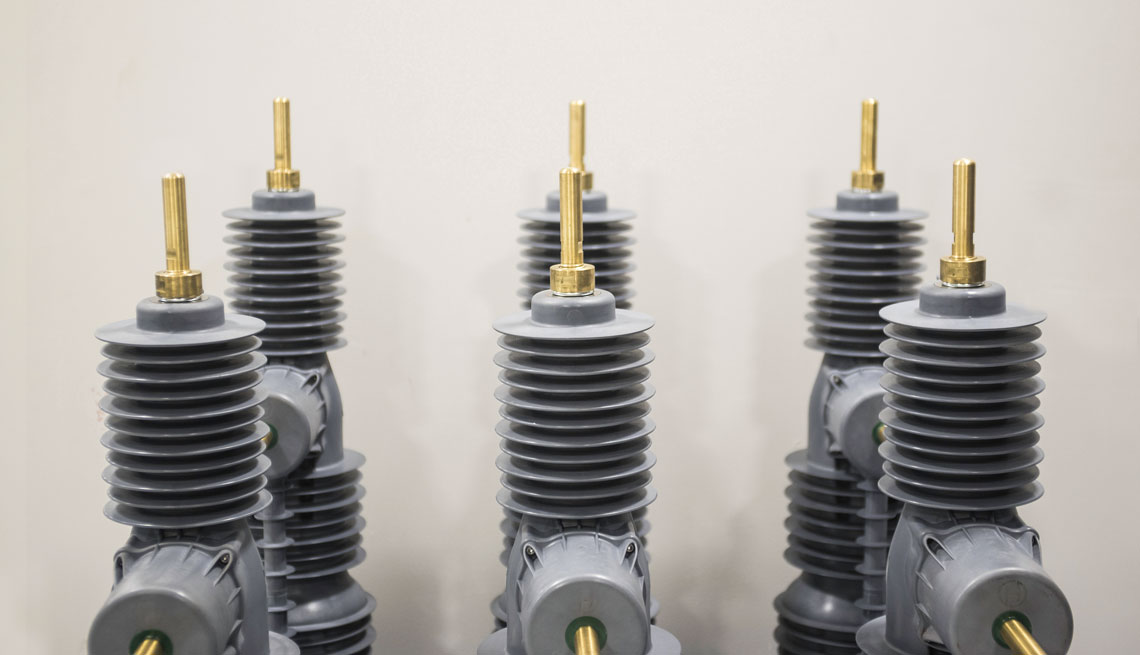When a branch, a bird, or a marmoset comes in contact with medium-voltage overhead power lines, a device known as a recloser detects the short circuit and shuts off the power. As the conductors are usually undamaged, the recloser can then restore power to homes, buildings, and stores in the area within seconds.
Brazil-based HartBR, located in Barueri, Greater São Paulo, has recently developed a new, compact and low-cost recloser model—the Rocket 3F—to compete with products from industry giants such as Eaton and Schneider. Although the manufacturer has not disclosed its final price, the device is claimed to have a lower overall cost of ownership than currently available models, whether imported or locally produced. At the end of May, the system will undergo final testing in Italy.
If successful, electric utilities will have an alternative recloser model available for their three-phase medium-voltage power lines—the uppermost conductors in overhead distribution systems. Medium-voltage power lines are typically used in areas with high electricity demand, such as urban centers, industrial districts, and agricultural processing units.
Automatic reclosers were first adopted on a large scale in Brazil in the early 2000s, but due to their prohibitive price (around R$60,000), utilities have primarily installed them on main distribution trunks, which carry power from substations to entire cities or neighborhoods. HartBR’s new and more affordable model could be installed on branch lines, where short-circuit protection is typically provided by fuses or breaker-like switches. When power goes out, the fuses or switches need to be manually replaced or reset.

Léo Ramos Chaves / Pesquisa FapespA conventional recloser at the top of a utility poleLéo Ramos Chaves / Pesquisa Fapesp
The Rocket 3F comprises two components: the recloser itself, where the three-phase powerline conductors are connected, and a control box, containing electronics and communication components. “The device weighs 50 kilograms (kg), about a quarter of the weight of comparable devices available on the market, including the 2 kg control box. Ours performs the same functions as the 70 kg control box of traditional reclosers,” says electrical engineer Luiz Eduardo de Antonio, HartBR’s commercial director, who described the recloser development project in his master’s thesis, completed in 2022 at the University of São Paulo (USP).
Another feature of HartBR’s recloser system is that it can be remotely controlled through a mobile app accessed via Bluetooth. “This avoids having to use a ladder to climb the pole and connect a laptop to the control box with a cable, as is the case with most conventional reclosers,” explains electrical engineer Celso Garcia Lellis, the company’s founder and controlling shareholder.
Competing devices typically use conventional batteries, replaced every two years. The Rocket 3F does away with the battery and instead uses a supercapacitor (an electronic device that stores energy), which can last as long as the device itself, with an estimated useful life of 25 years. If power goes out, according to the manufacturer, the supercapacitor will still function for 48 hours, twice as long as with a battery.
If these features meet expectations, they could simplify the installation of reclosers in the field, according to electrical engineer Clebson Alves Duarte from local utility company Energisa, who learned about the project during a visit to the factory. Energisa collaborated on the development of HartBR’s previous recloser model, the Rocket 1, for single-phase systems. With a single current-carrying conductor, this type of system is widely used in rural areas or regions with lower electricity demand. HartBR reports having sold 2,500 units of this model since its launch three years ago.
The Rocket 3F was developed as part of a research and development (R&D) program mandated by the Brazilian Electricity Regulatory Agency (ANEEL), which requires utilities to allocate part of their revenue to developing or deploying new technology. As part of HartBR’s R&D project, an energy laboratory was set up in partnership with EDP Brazil, the Brazilian subsidiary of a Portuguese electric utility group, and the Institute for Social and Economic Studies (INESC), a nongovernmental organization that promotes innovation in the power sector. The project was co-funded by FAPESP’s Innovative Research in Small Businesses (PIPE) program.

Léo Ramos Chaves / Pesquisa FapespThe production line for the new Rocket 3F model, in AtibaiaLéo Ramos Chaves / Pesquisa Fapesp
“If a utility is able to reconnect the system within 3 minutes, the momentary outage will not affect its service quality scores,” notes electrical engineer Giovanni Manassero, from the Polytechnic School of USP, who did not participate in the Rocket 3F project. ANEEL sets Brazilian utilities’ electricity rates based on operating costs, investment in system improvements, return on investment, and service quality scores. “An annual rate-setting review can result in lower permitted rates if service quality criteria are not met.”
Electrical engineer Diego Issicaba, from the Department of Electrical and Electronic Engineering at the Federal University of Santa Catarina (UFSC), learned about the project about five years ago as a member of a team evaluating the potential use of the new recloser at EDP Brazil. “Even companies like EDP, which already have a large fleet of reclosers installed, could further improve their quality scores by installing even more of these devices in their systems,” comments Issicaba.
Three three-phase reclosers from HartBR were sent in March to Centro Elettrotecnico Sperimentale Italiano (CESI) in Milan, which will test the short-circuit current interruption speed of one of the units and the recloser’s ability to withstand high currents, based on international technical standards. The CESI team will also evaluate the software used to detect current surges and determine when to disconnect the circuit based on system capacity.
Previous tests conducted at POLI-USP’s High Voltage and Lightning Technical Service revealed minor issues, which were fixed throughout 2023 until the unit successfully passed testing in January this year. After the device passes further testing at CESI, HartBR intends to trial 40 reclosers from a pilot batch on EDP Brazil systems in São Paulo and Espírito Santo. If all goes as planned, production should begin in 2025.
Project
Development of a three-phase polymer recloser for overhead cabling up to 27 kV, integrated with LoRa and NB-IoT networks (nº 21/06472-8); Grant Mechanism Innovative Research in Small Businesses (PIPE); Principal Investigator Celso Garcia Lellis Junior (HartBR); Investment R$865,107.37.
